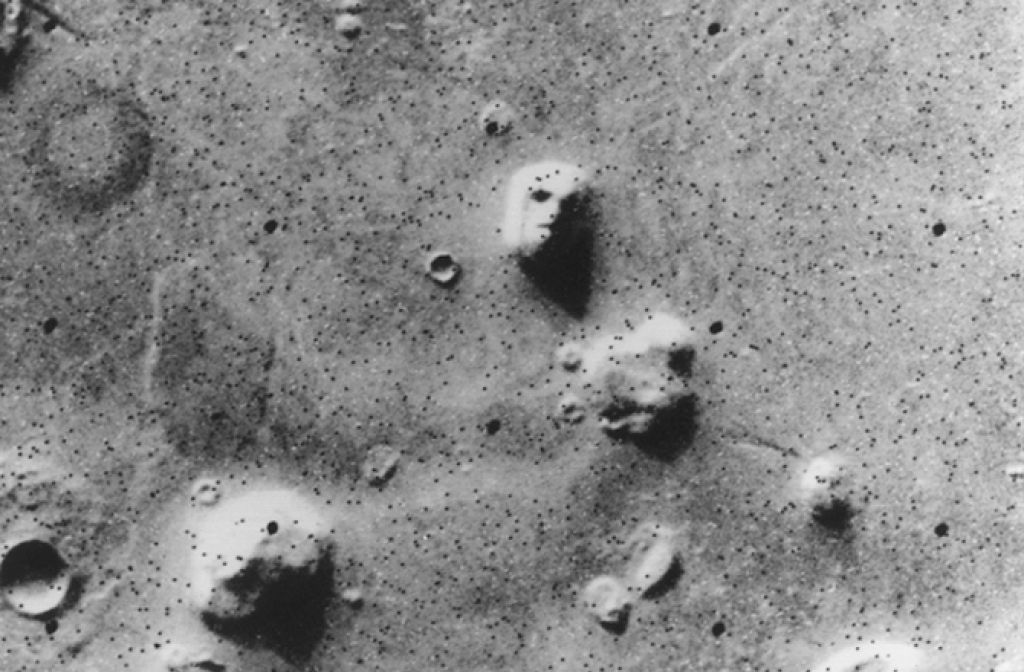Menagerie of animals ‘discovered’ on Mars
Forget the Biker Mice From Mars … recent photos from NASA's Curiosity Rover show what looks like a squirrel hiding among the rocks on the Martian surface!

This “discovery” was followed swiftly by another sighting, this time of a lizard.

In the past, people have also claimed to have seen giant spiders on Mars (has anyone told David Bowie?), and even a Martian yeti.
So what's going on here? Is the surface of Mars really bustling with a variety of extraterrestrial life?
The answer is a resounding no. None of these so-called “sightings” are genuine, and it doesn't take a rocket scientist to figure out why.
Take a closer look at the images again, and you'll very quickly realise that you are really just looking at rocks. The human mind has a knack for finding familiar patterns and shapes from otherwise arbitrary information, a phenomenon known as pareidolia. This is the reason why people see faces in pieces of toast, or why we instantly understand what a smiley face emoticon signifies.
The so-called lizards and squirrels that have been “spotted” on Mars thus far have been illusions that keen UFO spotters have picked up. The human desire to discover why we are here, how we got here, and where it all began is strong enough to make these incidents of pareidolia quite common, especially as NASA's Curiosity Rover continues to beam back clear, high-definition images of an alien surface, and make them widely available to the public.

So what could live on Mars, then? We asked our resident astronomer, Vincent Nettmann, what kind of discovery we ought to expect from Curiosity.
“Certainly no form of life known to man, other than possibly primitive microbes or maybe advanced organisms similar to lichens that survive in solid rock on Earth. If there exists more complicated life forms right now, they exist in a permanent subterranean environment. There's nothing to breathe, eat or drink on the surface – this we already know due to all the Mars probes and research conducted. My feeling is that life as we know it certainly doesn’t exist on Mars at present.”
Well, that rules out the lizards and rats, then.
“There are a few scientists who believe that life could have existed on Mars a long time ago, and that the chance of finding some signs of fossilised evidence could indeed exist. Most of these individuals believe that at the very least, some very primitive microbial forms of life could have existed on Mars at some time in its past when it was nearer the Sun, in the 'Goldilocks Zone'.”
Why is it important that missions to find life in the universe, like the Curiosity Rover, continue to be funded?
“It is a natural expansion of human intelligence to ponder about life elsewhere,” Nettman explains. “Exploration of this nature is a learning curve that teaches us about ourselves, drives technologies, invention and innovation. As I often say in my talks, 'we human beings are in fact just a part of the process of the Universe, getting to know itself.'”
There will always be conspiracy theorists, and many more examples of pareidolia, that emerge from our continued exploration of space, and the quest to discover our origins. It's important to remember that genuine research and real discoveries, although often not quite as exciting as the thought of spotting a little green man through our telescopes, do advance our understandings of ourselves, and our place in the universe. There are plenty of genuine discoveries to get excited about - not just through NASA, but through the continuing discoveries of fossils here on Earth, too. Check out our exhibition guide to learn more about the Cradle of Humankind.